Smartphones are the center of our digital lives. And since you’ll likely use your phone more than any other gadget you own, picking the right one to last you through years of use is crucial.
Fortunately, we’ve tested all of the top smartphones released in 2020 to help you make the right call. Here are the ones we found to be the best:
Apple’s iPhone 12 checks all the boxes a smartphone should: It has a gorgeous aluminum design crowned by a 6.1-inch Retina display. The A14 Bionic processor inside delivers power that is second to none. No matter how many apps we had open in the background, we couldn’t make the iPhone 12 slow down. The camera on the iPhone isn’t just one of the simplest and quickest cameras around, but it also resulted in some of the crispest photos of any phone we tested. The iPhone 12 also beat out the other 2020 Apple smartphones; the 12 Mini is just too tiny, whereas the 12 Pro’s upgrades — namely the extra camera lens, a LiDAR sensor and a stainless steel design — don’t justify the added $200.
The $1,299 Galaxy Note 20 Ultra — the Android equivalent to the iPhone — sports a triple camera system, a gorgeous and massive 6.9-inch display, a zippy processor and a handy S Pen for note taking. While just as impressive as the iPhone 12, the lofty price point kept it out of our top spot. The Note 20 Ultra is capable of capturing extremely high-quality photos, but it’s not the streamlined, simple point-and-shoot setup found on the iPhone and has features that often feel gimmicky, such as the 50x Space Zoom. For those looking for a top-of-the-line phone that’s not emblazoned with an Apple logo, though, the Note 20 Ultra will serve you well.
Those that don’t want to — or can’t — shell out $1,000 for a new phone have a tremendous option in the Google Pixel 4a 5G. At just $449, the phone pairs a rich 6.1-inch display with Google’s best-in-class photography smarts. In our testing, we found that this budget-friendly smartphone captured images that were just a notch below that of the iPhone 12. The phone is also 5G ready, allowing it to connect to the fastest cellular networks out there and ensuring that the sub-$500 investment will stretch even further into the future.
Best smartphone overall: iPhone 12 ($799; amazon.com or expercom.com)
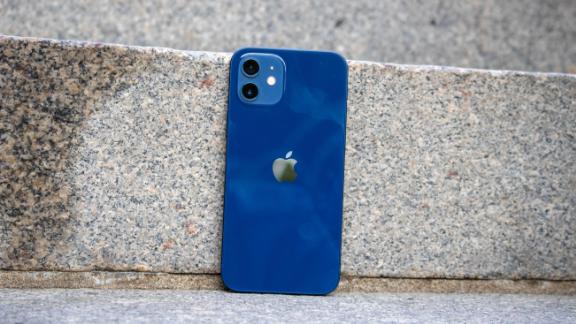
While other phones continue to balloon in size, the iPhone 12 kept the same 6.1-inch screen size as its predecessor. It’s still plenty of real estate, but isn’t an unwieldy screen size that necessitates two-handed use like some other smartphones on the market.
The display is also an OLED that delivers vibrant colors, high levels of detail and deep blacks. The result is a display that’s immersive for movies and sharing photos, but equally helpful to showcase important info in an email. Apple’s OLED is a bit less saturated than the Note 20 Ultra’s and doesn’t skew as cool as the Pixel’s. Even so colors pop when playing games or taking in a movie. Notably, the Avengers Endgame climatic ending looks very well balanced on the iPhone 12. It’s comparable to an OLED television in that the vibrancy of Captain Marvel’s glow bursts off the display and highlights the surrounding environment — all while not obscuring other aspects of what is on screen.
When dark mode is engaged and you’re reading an email the brighter tones of text pop off the display. In everyday use, you’ll also find that the OLED doesn’t cause extra eye strain as an LCD might.
The iPhone 12’s display doesn’t have a 120Hz refresh rate, but we found that if you haven’t used a speedy refresh rate on a smartphone, 60Hz will do for now. With the Note 20 Ultra’s 120Hz display, there’s a certain smoothness when swiping or watching content that makes it feel more instant that the iPhone can’t currently meet. When scrolling through Twitter or Instagram the iPhone has a bit of hesitation that is noticeable after using a 120Hz device like a Note 20 Ultra.
The iPhone 12 still keeps a notch at the top that houses a True Depth Sensor, which enables Face ID for unlocking and authenticating. It was the fastest way to unlock the phone, but it’s 2020, and the wearing of masks obviously renders Face ID moot for the most part. The iPhone’s front camera also delivers a rich photograph even with selfies. Apple doesn’t oversature or skew into fantasyland auto smoothing your skin, as some other smartphones tend to do.
The A14 Bionic Chip powers the entire iPhone 12, including the cameras. SmartHDR 3 can figure out an image — identifying the shot, direction of lights and the subjects — in just microseconds. Nine times out of 10 you can just point and shoot to get a great image. In our testing, it was able to focus and capture the image within a half second of us hitting the shutter. The Note 20 Ultra takes a bit longer at closer to a full second, depending on the shot. We also found that the viewfinder is precisely the same as the end result — colors were balanced and lighting was correct.
Night Mode is extremely impressive here. Yes it takes a bit longer to capture your shot, but you have full control over how long the exposure is. In about two seconds after the image has been shot, the iPhone 12 will process the photo and deliver a balanced result. It adds back in light and detail that at times feels seemingly impossible. It also doesn’t skew overtly warm or overtly cool with these shots. That meant, in our testing, no overexposed shots with a bright flash or pitch-black photos with no detail.
Everyday tasks like email, messagings, calls, web browsing and basic games happened without a hitch. We could easily leave several apps open in the background, play a round of numberzilla and take a FaceTime call without a hiccup. The experience was on par with the Note 20 Ultra, and blazed past the Pixel 4a 5G and other phones we tested.
It won’t just be fast for the first few months either – we’re three months down the line and have noticed no slowdowns. It should last for many years to come, especially when you look at how previous Apple chips have performed.
Apple also added 5G support to the iPhone 12, which supports the two main standards here in the United States — mmWave and sub6GHz. That’s a standard all of our top picks support. Right now, sub6GHz is the most available but it doesn’t deliver the crazy fast speeds you’ve been promised. We noticed marginally faster speeds over 4G LTE, but the big advantage was more capacity. This way if several 5G devices are around each other, it won’t create a slow down. mmWave is the true 5G vision we were promised, but it’s very hard to track down right now. You need to have visibility to the cell site and your phone needs a clear line of sight to it. With mmWave you’ll get much faster speeds, which in our testing meant 2,000MBps down and up. That beats out 4G LTE several times over. So if you’re in a city with 5G right now, you’ll see faster speeds, but for many it’s simply about future-proofing.
Battery life is really strong on the iPhone 12, as we averaged 11 hours of screen-on time. That’s more than enough to get through a full day. In our battery test, it clocked in at 12 hours and 30 minutes.
At just $799, the image and video capturing chops along with the other features of the iPhone 12 make it our best overall pick for a smartphone. We have no doubts it will last for years to come.
Runner Up: Galaxy Note 20 Ultra ($1,299; samsung.com)
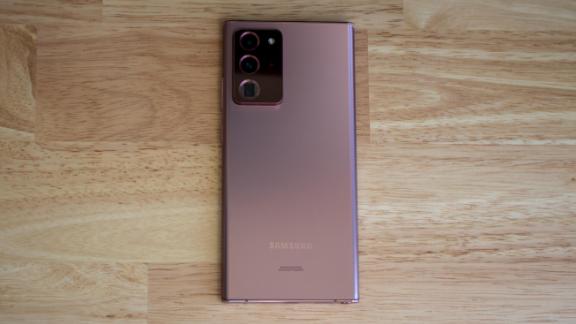
The Galaxy Note has long been the most powerful and more experimental phone from Samsung historically. And in 2020, Samsung built upon that further, equipping the Note 20 Ultra with a wild 50x Zoom on the main camera, a sharp 6.9-inch Super AMOLED display and an all around speedy experience.
For many, the screen size might be too large, though. At 6.9-inches, it trumps the iPhone 12’s screen size, perhaps inching into unwieldy territory. Aiding in the ability to manage the larger size is a smooth matte finish on rear and an overall thin build. It also looks very nice mixing aluminum with glass for a high-end look.
The Note 20 Ultra is capable of capturing some great shots. It has a versatile trio of lenses — a 16-megapixel ultrawide, 108-megapixel wide and a 12-megapixel telephoto lens. And when you are shooting images, the auto mode generally delivers good results that you’ll be happy to share on Instagram. In our testing, we especially liked how it handled overtly bright shots by not increasing vibrancy or dropping the white balance. That means you don’t get an overexposed mess, but a properly shot photo that doesn’t lose the details. It’s nearly on par with Apple’s Smart HDR and Google’s processes, but misses a bit more details in complex shots with multiple light sources and a large number of subjects.
Samsung does raise the bar a bit by combining optical and digital zoom. Its 50x Space Zoom feature is still a gimmick in most cases, but it does what it sets out to do. While testing the camera, we could zoom in on the NYC skyline from across the Hudson River in New Jersey to make out minute details, such as the spire of the Freedom Tower. Though a bit blurry, it’s not totally unusable.
The phone’s display is simply terrific. We enjoyed taking in films like Captain Marvel on the expansive 6.9-inch screen. The true highlight for us was the 120Hz display, which made the experience buttery smooth. It’s most noticeable when there’s a lot of motion on the display — think Real Racing and the car moving alongside the street. No streaking or blurriness to be found here; it’s more lifelike than any other phone. Even scrolling through Twitter was enjoyable, as there were no lags or jumps no matter how fast we thumbed the screen.
For the most part, the Note 20 Ultra is the Android equivalent to the iPhone 12. It runs Android 11 with a Samsung user interface on top. It’s capable of playing Fortnite without slowdowns while having upwards of 20 applications open in the background. We had difficulty trying to get the Note 20 Ultra to slow down and it’s thanks to the Qualcomm Snapdragon 865+ processor and 12GBs of RAM. You won’t notice slowdowns when swiping through screens or browsing through large PDFs or files as well. Along with your fingers you can use the S-Pen (it still docks into the Note 20 Ultra) to navigate the software and to quickly jot down notes.
The massive 4,500mAh battery inside provides enough juice to get through even a packed day — we were able to get upwards of 10 to 12 hours filled with all types of use. You can charge the Note 20 Ultra with a USB-C cable and wireless charging. Better yet, place a pair of Galaxy Buds Live or another Qi-enabled device on the back to charge it.
It’s a perfected smartphone with a ton of features that you may never use – and it’s all that for $1,299. It’s regularly seeing discounts but that price makes it a very expensive phone with the features we needed to see. And yes, it’s still the best Android phone. Maybe with a lower price tag, it would have been more competitive against the iPhone 12.
Budget-pick Google Pixel 4a 5G ($459, originally $499; amazon.com)
For $499, you’re getting a whole lot of phone with the Pixel 4a 5G. While this our budget pick, it doesn’t sacrifice much in terms of the overall experience. Like any Pixel should, it runs a clean version of the Android operating system with some handy customizations. That’s paired with a modest processor and dual lenses on the back.
Google’s Pixel phones are known for a focus on AI imaging and excellent photo quality, using hardware with some software magic to deliver images with tons of details, sharpness and accurate coloring. They were first on the scene with a literal jaw-dropping Night Sight mode. There are two cameras on the back of the phone, a standard 12-megapixel camera and a 16-megapixel ultra-wide camera.
Both are versatile, but we have a sweet spot for the ultrawide. It lets you capture wide ranging shots of nature, pets and people. Google’s working some magic to avoid a fish eye effect and to stop dislocation of items in a scene. These little AI tricks help to deliver an image that’s perfect once you view it. Processing time for a photo is pretty quick here, especially if you’re shooting with no custom adjustments. You won’t need to make many when you’re shooting with the 4a 5G either.
Night Sight will auto activate, like on the iPhone and Note 20 Ultra, and it still works magic, using software to add light into images when there seemingly isn’t any. Google tends to skew a little cooler, but we don’t mind it too much and like it better than Samsung’s approach. Portrait Mode is another area the 4a 5G shines with a tremendous amount of depth being added into shots.
Your viewfinder when shooting will be a 6.2-inch AMOLED FHD display with a pinhole cutout in the top left corner. That cutout camera is handy for selfies and video calls, but we wouldn’t recommend using it for unlocking as it’s not very secure. Masks also make that pretty difficult now and you’ll be happier with the fast fingerprint sensor on the back.
It’s an AMOLED screen which means deep blacks and it has a neat trick like previous Android devices. When the phone is off, it can constantly show the time, date, temperature and some notification icons while using minimal screen pixels. It is really handy and reduces how many times you might need to pick up your phone. The display is better than the middle of the road – we thoroughly enjoyed watching content and gaming on it. And it bests our overall pick when it comes to a refresh rate — the Pixel 4a 5G features a 90Hz refresh rate. In actuality, it’s a hair bit smoother over the iPhone 12 in everyday use but you’ll notice it in a flick like Ford vs Ferrari.
That touchscreen will be your gateway to a crystal clean version of Android 11, which we prefer over Samsung’s version of the OS. It’s just cleaner and simpler without wasteful features being thrown at you constantly. Powering the entirety of the experience is a Qualcomm Snapdragon 765G processor with 6GB of RAM. It’s plenty for a $499 device and delivers pretty swift processing times for images. In everyday use you’ll be fine to multitask and leave apps open in the background for the most part. Larger exports and intense tasks might slow the device down a bit.
Luckily that didn’t extend into battery life and the 3,800mAh battery is punching above its weight for a 6.1-inch phone. You should have no issues getting a full day of use out of the Pixel 4a 5G and we averaged close to eight hours of screen on time.
As its name implies, it’s a 5G-equipped phone, with support for both Sub-6 and mmWave networks – the same bands as the iPhone 12 and the Note 20 Ultra. That means once your carrier rolls out support for either type of 5G connectivity in your area, you’ll be able to take full advantage of the faster speeds and lower latency.
Apple’s iPhone SE came close to being our pick here, but ultimately it came down to the camera and 5G connectivity. The latter of which is all about future-proofing your purchase. The 4a 5G’s multiple lenses and fancy processing tricks on a device in this price range makes it a clear winner.
Google’s Pixel 4a 5G is our favorite out of the new pixels this year. It’s cheaper than the $699 Pixel 5 for basically the same feature set and only a bit more than the Pixel 4a at $349. It punches above its weight in many respects.
A note about foldable smartphones
Foldable smartphones are picking up steam. In 2020 alone we got several — the Motorola Razr, Galaxy Z Flip, Surface Duo, Galaxy Z Flip 5G, Galaxy Z Fold 2 and Motorola Razr 5G. We fully expect 2021 to deliver even more foldables; Samsung is already committed to doing that and making them cheaper.
It’s currently a niche market right now, but the folding future of phones is exciting. The new form factor allows for breakthroughs to happen in engineering and creates new experiences for us to use. A single device might be able to tackle your communication needs and be a tablet. From a lifestyle perspective, a compact device like the Z Flip can make your use of technology more intentional.
If we were to pick one for 2020 it would the Z Flip 5G. We’ve called it the best foldable on the market and it’s relatively affordable, especially with a trade in. It goes from compact with a tiny 1.1-inch screen to a large 6.7-inch screen when unfolded. It also launched at $1,380, which is still pricey but much cheaper than the $1,999 Galaxy Z Fold 2. The hinge feels great and has extra features to ensure debris or materials wouldn’t get caught under the display. The phone features a dependable set of cameras, specifically a wide and ultrawide lens with all of the modes you could want.
We’re excited about the future of foldables and expect that next year we’ll be calling one a top pick.
How we tested
As you’d expect, when testing a smartphone we physically switch over to that device for a period of time. It becomes our daily driver with our SIM card inside, the apps we use and our contacts. That’s our real world testing – using it for phone calls, texting with friends, capturing memories, playing games, chilling out with music, reading the news and taking in content.
Additionally we pay close attention to four specific areas. When evaluating a phone’s build, we analyze and test the design. Does it feel good in the hand? Is it easy to hold or is it a slippery mess? We also factor in what types of ports a phone has and, of course, check for a headphone jack. As phones have been getting larger and larger, size is taken into account.
Performance covers a lot – from the display to software and even connectivity with more in between. To standardize the performance we used benchmarks on each smartphone and these are the same tests we run on devices in individual reviews. A proprietary battery test and Geekbench 5 are the call outs. With connectivity we tested both cellular and Wi-Fi in a variety of situations.
With cameras, we tried to use them as you would. Capturing family at night and during the day, testing the all important Portrait Modes and just general shooting. We shook our hands to test stabilization, tracked shutter times and saw how long it took to capture a photo.
Battery life was a category of its own to identify full run times, charging times and just how much use each phone could provide. The CNN Underscored battery test consists of a 4K video on a loop that runs until the device powers off. We ensure the brightness is set to 50% and turn off connectivity via airplane mode.
How we rated
Below is our exact point breakout for each category and subcategory.
- Build had a maximum of 15 points: design (5 points), size (5 points) and ports (5 points).
- Performance had a maximum of 40 points: display quality (10 points), everyday performance (10 points), software (5 points), benchmarks (5 points), connectivity (5 points) and speakers (5 points).
- Cameras had a maximum of 20 points: main cameras (10 points), front camera (5 points) and video (5 points).
- Battery had a maximum of 20 points: longevity (15 points) and charging speeds (5 points).
- Warranty had a maximum of 5 points: overall (5 points).
Others we tested
iPhone SE ($399; amazon.com or expercom.com)
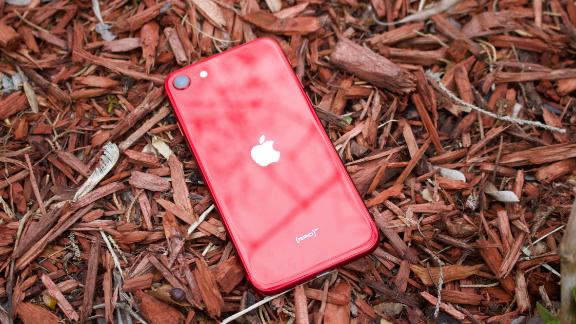
While the iPhone SE didn’t get our budget pick, it’s a close second. At $399 with the A13 Bionic chip inside it runs iOS 14 like a champ and is mostly on par with the iPhone 11, 11 Pro and 11 Pro Max. It feels classical with a 4.7-inch screen and the Home Button with Touch ID on the bottom.
iPhone 12 Mini ($729; amazon.com or expercom.com)
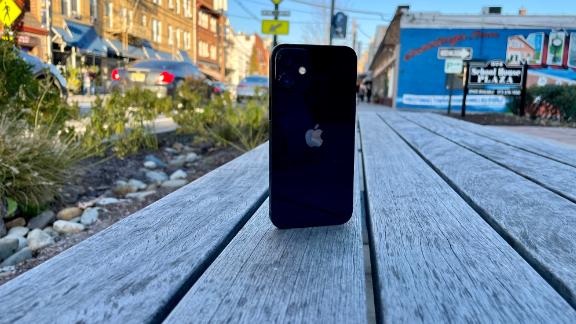
The iPhone 12 and 12 Mini are identical except for the screen size – and that’s really good news. With a 5.42-inch screen, the iPhone 12 Mini is the compact phone with no compromises. It has the same camera setup as the 12 and that means terrific photos no matter the shooting conditions. It runs iOS 14 just as well and really is a great choice for people with smaller hands.
iPhone 12 Pro ($999; amazon.com or expercom.com)
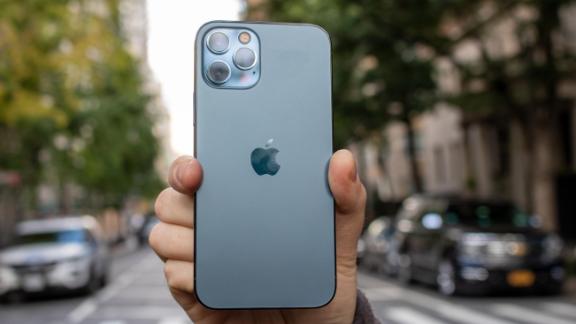
As we noted above, for most people the iPhone 12 will be just fine. But if you want a classier stainless steel design and an extra camera on the back, the 12 Pro is worth the $200 increase. Notably the telephoto is really handy for portraits as well as being another view for shooting a photo. We also really liked the LiDAR sensor which further improved focusing times and Night Mode.
iPhone 12 Pro Max ($1,199; amazon.com or expercom.com)
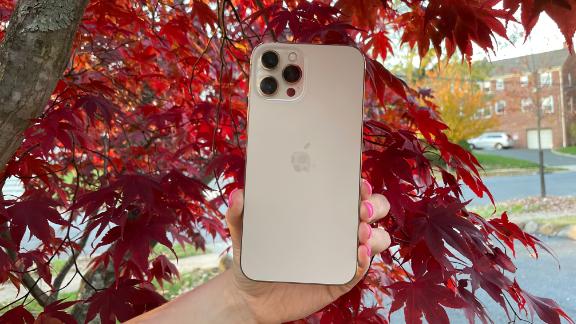
For some the iPhone 12 Pro Max might be the right choice but for many it’s size is just too big. It has the biggest screen of any iPhone coming in at 6.7-inches and it offers a nearly identical experience to the iPhone 12 Pro. The camera sensors are physically larger and can capture a bit more details, but unless you’re a professional photographer it will be hard to notice the improvements.
Galaxy S20 FE ($699; samsung.com)
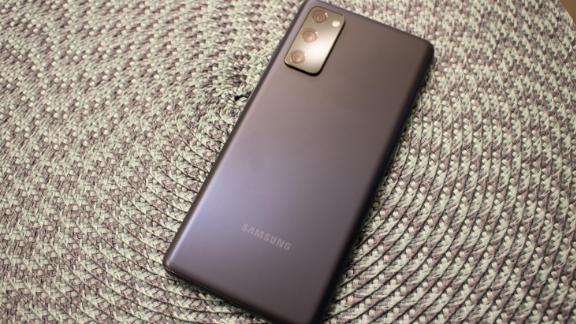
Arriving nine months after the original S20, the Galaxy S20 Fan Edition got almost everything right. A $699 mashup of Samsung technologies held together in a polycarbonate plastic build. It delivers a triple camera setup on the back with support for Space Zoom. It can take good photos and capture smooth video, but it takes a little more work than our best overall pick. The 6.5-inch Super AMOLED display on the front delivers a 120Hz refresh rate. We wish all phones, including the iPhone 12, offered the faster refresh rate. Ultimately though the iPhone 12 is just $100 more and the Pixel 4a 5G is much cheaper.
Galaxy S20 ($999; samsung.com)
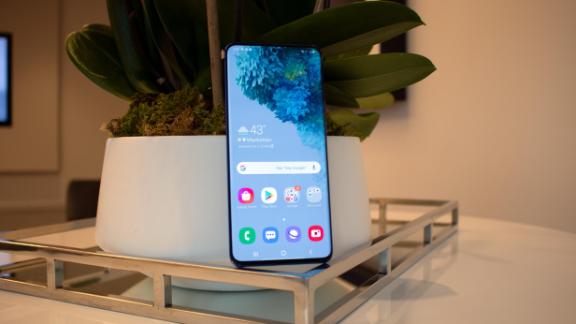
Much of the Galaxy S20 is the same no matter the model. The entry-level S20 unfortunately didn’t follow the S10E with the same feature set. The S20 features a 6.2-inch Quad HD AMOLED display with a 120Hz refresh rate and a triple lens main camera system with a 30x Space Zoom. It’s powered by the same Qualcomm Snapdragon 865+ with 12GB of RAM as the S20 and S20+.
Galaxy S20+ ($1,199; samsung.com)
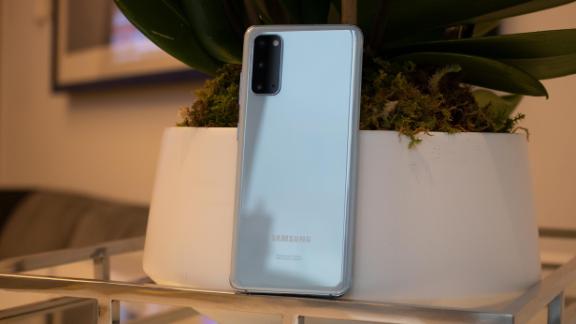
The Galaxy S20+ is just another size of the S20 with a 6.7-inch display. It’s still an AMOLED display with 120Hz, three cameras on the back and a zippy Snapdragon 865+ processor. Samsung is big on releasing multiple models and the S20+ is just another size option.
Galaxy S20 Ultra ($1,399; samsung.com)
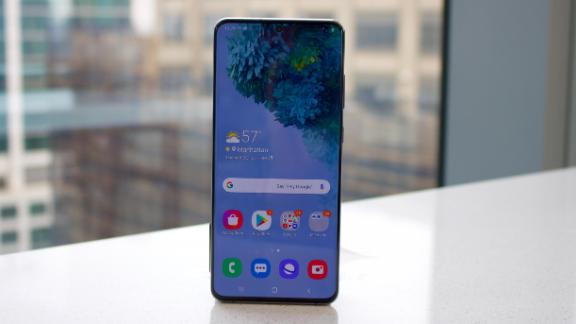
We proclaimed this $1,399 smartphone to be the kitchen sink phone and it still lives up that name. It features a 100x zoom on a camera with a massive AMOLED display, And support for the core 5G bands and a super zippy processor that lasts for many years to come. It’s just a very expensive phone and the camera really wasn’t the best. You’re better off with the Note 20 Ultra.
Galaxy Z Flip 5G ($1,449; samsung.com)
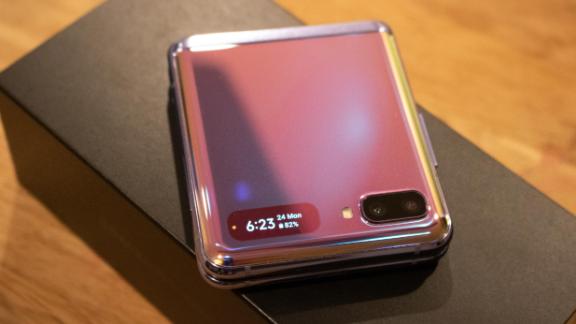
As we note above, if we were to give a foldable a top pick it would be the Galaxy Z Flip 5G. With a trade-in, it’s relatively affordable in comparison to our other picks and it’s a great smartphone. We still think it’s the best foldable on the market with its compact build. It can easily fit in a shirt pocket and there’s even a tiny screen on the front. You’ll unfold to a 6.7-inch Infinity Flex display that’s a mixture of materials – glass and plastic included. The hinge is designed to ensure materials don’t get under the screen and you can stop the fold at almost any angle.
Galaxy Z Fold 2 ($1,999; samsung.com)
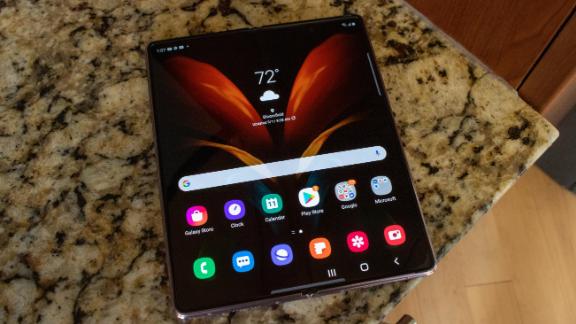
Samsung’s second generation flagship foldable is seriously impressive. The hinge and design is vastly improved over the original – that’s crucial for a foldable device. It’s still a niche market for this type of phone, but the Z Fold 2 is still in the upper echelon at nearly $2,000. For that price you can go from a traditional smartphone to a 7.6-inch Dynamic AMOLED Infinity Flex display. That’s massive and gives you plenty of room for entertainment, productivity and even games. We just need developers to update applications for the extra large screen.
Google Pixel 4a ($349; amazon.com)

The first Pixel of 2020 struck a really nice chord. At $349 it delivered a really solid experience with an OLED screen, a fingerprint sensor on the back and one camera lens on the back. At just $349 it’s a great 4G LTE capable phone, but in 2020 we’re also focused on longevity and for a little bit more the Pixel 4a 5G gets you a more future-proof device.
Google Pixel 5 ($699; amazon.com)
The Pixel 5, at just $699, is the high-end Pixel for 2020. But it doesn’t really impress more than the Pixel 4a 5G – it has a slightly more refined design and supports reverse wireless charging. Unless you’re a Pixel die hard who wants a fun color, the differences are minimal and the 4a 5G is the way to go.
Motorola Edge ($499.39, originally $699; amazon.com or motorola.com)
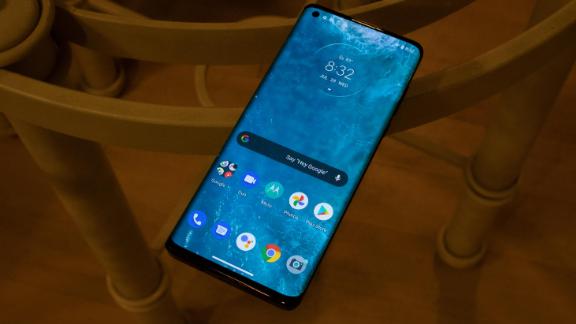
Motorola’s reentry into the flagship space was a mixed one. The more expensive Edge+ is a Verizon exclusive and that’s just no fun. The Motorola Edge is a modest flagship with a display that stretches to the very edge (get the name now?) – literally spanning the right and left sides. It didn’t add much actual use cases though and at $699, your money is better spent on our budget pick of the Pixel 4a 5G.
Motorola Razr 5G ($1,199, originally $1,399; amazon.com)
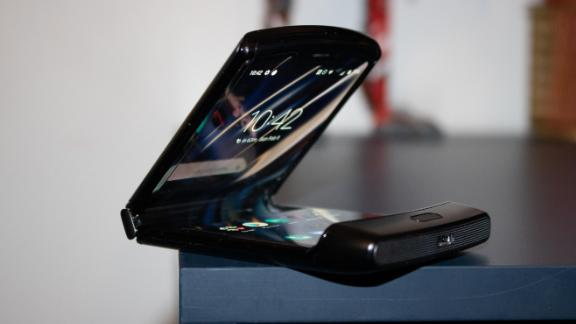
Our experience with the first generation of the Razr was nostalgia fueled, but ultimately not a good foldable experience. The second gen keeps the iconic design and a hinge that you can physically feel. But the fact that it feels more durable doesn’t get away from feeling the display fold and hearing it creak. We do like the larger display on the front over that of the tiny one on the Z Flip though. And Motorola making it available unlocked, instead of locked to Verizon, is a great move.
OnePlus 8T ($749; oneplus.com)
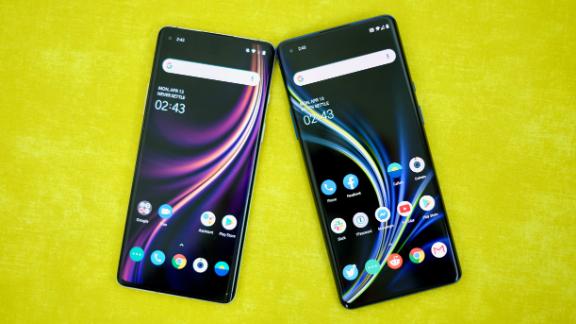
OnePlus is known for providing flagship specs and features at a price that undercuts its competitors, and the $749 OnePlus 8T is no different. It includes the latest Qualcomm processor, the Snapdragon 865, 5G connectivity, a big battery and four rear-facing cameras, including a macro lens for those photos you need to get really close to your subject. All OnePlus phones are powered by Android and run OnePlus’ proprietary Oxygen OS on top of it. The 6.55-inch display even has a 120Hz refresh rate, but ultimately the OnePlus 8T fell short from one of our top picks due to unreliable camera performance. Oh, and the fact that Samsung undercut OnePlus by releasing the Galaxy S20 FE that nearly matches its specs, but costs $50 less.
OnePlus 8 Pro ($799; oneplus.com)
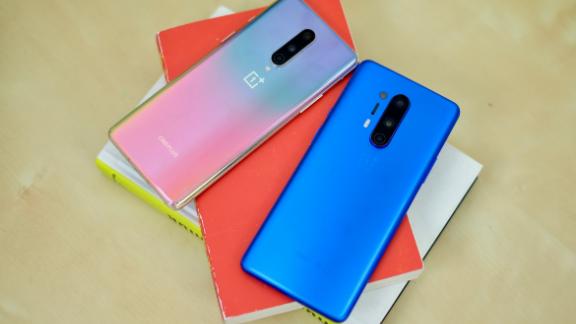
The OnePlus 8 Pro was released in early 2020 and remains in the OnePlus lineup as a higher-end option for OnePlus fans. It’s normally priced at $899, which is uncharted territory for a company known for its low-end prices on high-end phones. We reviewed the 8 Pro shortly after it launched and found it to be a fantastic Android phone, with a stellar display and strong performance with long-lasting battery life. The unlocked OnePlus 8 Pro lacks support for mmWave 5G networks, certain to be a drawback for some. The cameras are good, but not on the same level as the iPhone 12, and at this price, it needs to be as good or better to get a top pick.
Microsoft Surface Duo ($1,399; microsoft.com)
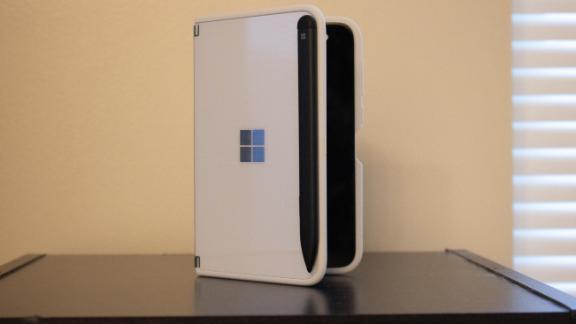
Microsoft’s re-entry into the smartphone space was a unique one. The $1,299 Surface Duo doesn’t have a folding screen, but rather two separate screens that are connected by a stellar hinge. The design purposely doesn’t feature any screen on the front and it’s meant to help you use your phone with intention. And while the hardware is good, the software experience left us wanting a lot more. Android as a whole isn’t ready for the two screen revolution and it was really buggy with major difficulties on sending applications to the proper sides of the display. Still, we have high hopes for version two.
"Smartphone" - Google News
January 01, 2021 at 12:01AM
https://ift.tt/3mWVSiQ
These are the best smartphones of 2020 - CNN
"Smartphone" - Google News
https://ift.tt/2QXWyGT
https://ift.tt/2KSW0PQ
Bagikan Berita Ini














0 Response to "These are the best smartphones of 2020 - CNN"
Post a Comment